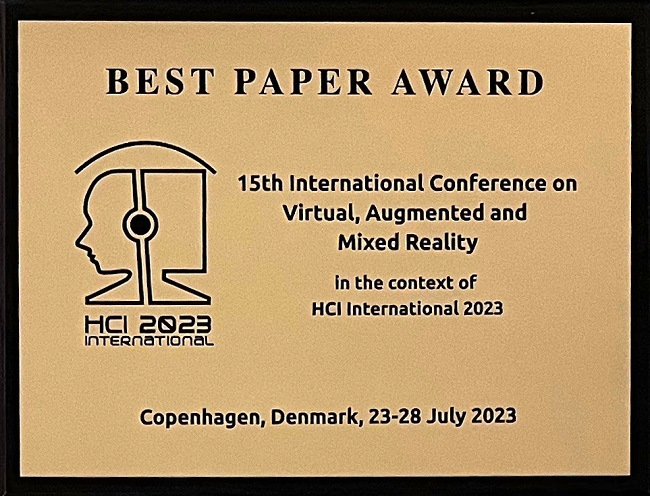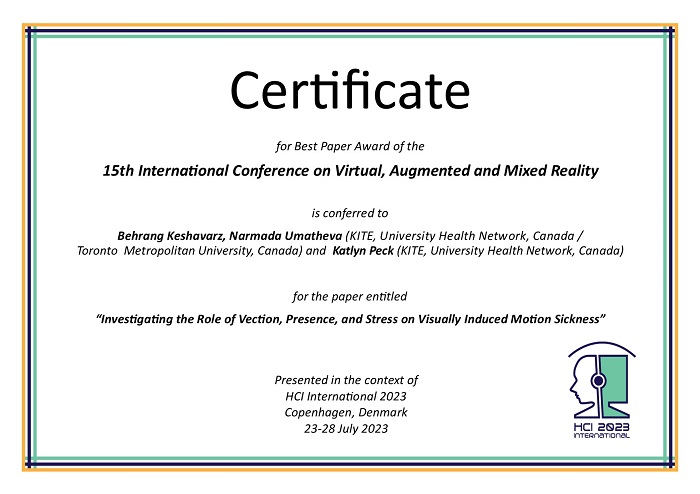
Best Paper Award for the 15th International Conference on Virtual, Augmented and Mixed Reality, in the context of HCI International 2023, Copenhagen, Denmark, 23-28 July 2023

Certificate for Best Paper Award of the 15th International Conference on Virtual, Augmented and Mixed Reality
The award has been conferred to
Behrang Keshavarz, Narmada Umatheva
(KITE-Toronto Rehabilitation Institute, University Health Network, Canada / Toronto Metropolitan University, Canada)
and Katlyn Peck (KITE-Toronto Rehabilitation Institute, University Health Network, Canada)

Narmada Umatheva
(presenter)
for the paper entitled
"Investigating the Role of Vection, Presence, and Stress on Visually Induced Motion Sickness"
Presented in the context of
HCI International 2023
Copenhagen, Denmark
23 - 28 July 2023
Paper Abstract
"Visually induced motion sickness (VIMS) is a common side-effect when using visual displays such as Virtual Reality applications. The goal of the present study was to further investigate how VIMS is related to the sensations of vection (i.e., illusory self-motion) and presence (i.e., feeling of "being there"). In addition, we explored how acute stress, anxiety, and discomfort may affect the severity of VIMS. A total of 53 participants were exposed to a 15-min-long VIMS-inducing visual stimulus while their level of VIMS was recorded before, during, and after stimulus exposure. Results showed significant, positive correlations between VIMS severity and vection frequency (i.e., the total amount of vection experienced), vection intensity, and presence. Only weak to moderately strong correlations were found for VIMS and stress. Interestingly, regression analysis revealed that vection frequency and the level of discomfort experienced prior to the experiment were the two best predictors of VIMS severity. The results of this study help to better understand how VIMS, vection, and presence are linked to each other and how individual and situational factors add to the experience of VIMS."
The full paper is available through SpringerLink, provided that you have proper access rights.